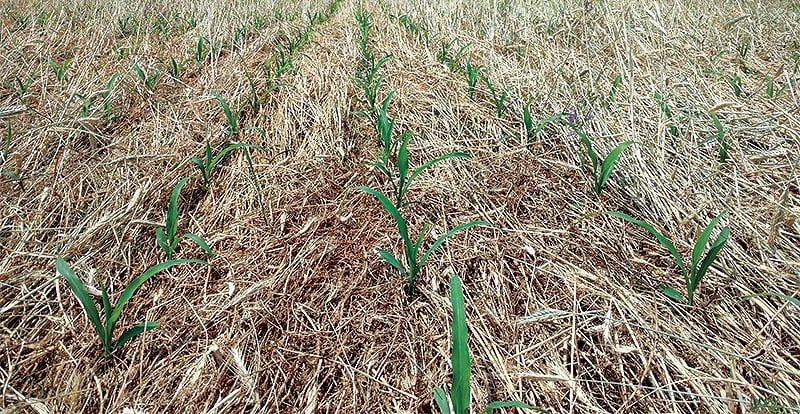No-Till Farmer
Get full access NOW to the most comprehensive, powerful and easy-to-use online resource for no-tillage practices. Just one good idea will pay for your subscription hundreds of times over.

Carbon Penalty. A high C:N ratio cover crop such as this cereal rye residue will likely mean supplemental nitrogen is necessary to meet the needs of the emerging corn crop. Soil microbes quickly scavenge available sources of nitrogen before it can be made available to the cash crop.
Long-time cover-crop consultant Steve Groff says many growers are missing management opportunities in their lack of understanding the relationship of carbon (C) and nitrogen (N) in the soil and in field residue.
“If you’d asked me to explain the ‘C:N ratio’ 10 or 15 years ago, I couldn’t have given you a meaningful answer, but over time I’ve learned that knowledge of carbon and nitrogen content in soils, cover crops and residue is an important factor in making covers work for us, and ultimately in better management of our fertilizer inputs.”
Groff operates a research-based no-till farm near Lancaster, Pa., and oversees Cover Crop Innovators (CCI), a subscription-based consulting service specializing in cover-crop management. He explained the C:N ratio recently in a CCI podcast for Lessiter Media’s Cover Crop Strategies.
“Simply put, the C:N Ratio is the comparison of the mass of C to the mass of N in a substance,” Groff explains. “If you have 10 units of C for each unit of N, the C:N ratio would be 10 to 1.”
Groff says knowledge of the ratio is important because it directly affects how quickly residue of both cover crops and cash crops decompose, and has a direct bearing on N management.
“Basically, the lower the C:N ratio, the quicker materials decompose,” he explains. “As an example, rye straw has a C:N ratio of about 82:1, compared with a cover crop of hairy vetch at 11:1.”
To make sense of C:N ratios in…